Saint-Côme-du-Mont
Carentan
The Cabbage Patch crossroad
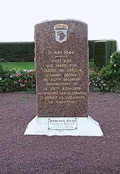


On June 11th right after Bridge No. 4 (last one before entering Carentan) is under control and shortly before noon an unexplained lull occurred in the fighting. The 502d PIR took advantage of this to re-form its left flank positions. Coy C moved forward from Bridge towards a cabbage patch located between the second and third hedgerows where they could fire down along the forward hedgerow as well as along the highway. Company A took positions just behind Company C and extended its line across the road. The positions on the left, in the cabbage patch and along the hedgerows, managed to hold throughout the afternoon against repeated German attempts to come down the ditches beside the highway and along the hedgerows.
At times they came so near that the men could hear the Germans working their bolts. The enemy gave the two battalions no respite and no opportunity to reorganize or evacuate the wounded. His artillery was weak, but his mortars never stopped firing.
Colonel Cole, looking out from a second-story window in the farmhouse, expected his line to crack. At 1830 he informed Regiment that he planned to withdraw and asked to have covering fire and smoke ready when the time came.
He believed that only closer and heavier artillery support would enable him to hold out. But the radio of his artillery liaison officer, Capt. Julian Rosemond, had been jammed. Finally the situation improves very rapidly, the enemy defence was broken, but the 502 PIR was too exhausted to lead a new assault and stayed on their position. The 506 PIR was sent to archive the job.
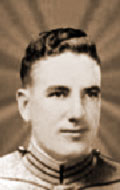
Cole, Robert G.
Rank and organization: Lieutenant Colonel, U.S. Army, 101st Airborne Division. Place and date: Near Carentan, France, 11 June 1944. Entered service at: San Antonio, Tex. Birth: Fort Sam Houston, Tex. G.O. No.: 79, 4 October 1944.
Citation:
For gallantry and intrepidity at the risk of his own life, above and beyond the call of duty on 11 June 1944, in France. Lt. Col. Cole was personally leading his battalion in forcing the last 4 bridges on the road to Carentan when his entire unit was suddenly pinned to the ground by intense and withering enemy rifle, machinegun, mortar, and artillery fire placed upon them from well-prepared and heavily fortified positions within 150 yards of the foremost elements. After the devastating and unceasing enemy fire had for over 1 hour prevented any move and inflicted numerous casualties, Lt. Col. Cole, observing this almost hopeless situation, courageously issued orders to assault the enemy positions with fixed bayonets.

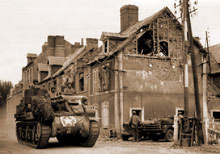
With utter disregard for his own safety and completely ignoring the enemy fire, he rose to his feet in front of his battalion and with drawn pistol shouted to his men to follow him in the assault.Catching up a fallen man's rifle and bayonet, he charged on and led the remnants of his battalion across the bullet-swept open ground and into the enemy position.
His heroic and valiant action in so inspiring his men resulted in the complete establishment of our bridgehead across the Douve River. The cool fearlessness, personal bravery, and outstanding leadership displayed by Lt. Col. Cole reflect great credit upon himself and are worthy of the highest praise in the military service.
The fall of Carentan on June 12
During the night of 11-12 June Carentan was set ablaze by artillery, naval guns, 4.2-inch mortars, and several tank destroyer guns which fired on point targets from the 327th Glider Infantry's positions along the canal.
At 0500, Colonel Sink ordered the 2d Battalion to attack toward Carentan. At dawn, when enemy fire made it apparent that the command post position was isolated and surrounded, the 1st Battalion was ordered to attack south from Hill 30 through the hamlet of la Billonerie toward the command post. As the 1st Battalion started out it was counterattacked near la Billonerie. It took heavy fighting through the hedgerows and houses to break through and extricate Colonel Sink's group. At 0600 it attacked out of the wood at Bassin a Flot and drove rapidly into the center of Carentan. The meeting with the 2d Battalion, 506th Parachute Infantry, occurred about 0730 after a short fight with enemy stragglers around the railroad station. The pincer manoeuvre succeeded in capturing Carentan, but the trap closed too late to catch the bulk of the German defenders, who evidently had escaped south during the night. After fighting in this town on June 12, «Easy Company» took a position on the western flank of the town. Here, Lt. Winters received his first wound - a gunshot wound to his ankle. This is also where Blithe was blind for a few hours.
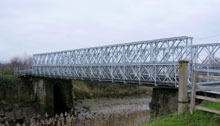
The Bailey Bridge
Carentan Bailey Bridge is the last bridge of this type left and use as a regular bridge, It is a short detour from N13. It is also name Biehou bridge which was constructed by Coy «C» of the 298th Eng Combt Bn at 8.00 pm on July 12th; the work was discontinued at 2330 hours due to artillery fire. They started again on the next morning; finally, it was achieved at 2.00 pm on July 16th.

The «Bloody Gulch» and the Bayonet Charge
On June 13 the 506th PIR was scheduled to deepen the defensive base South Carentan. Before the attack was settle down and on their way a strong enemy counterattack happened, supported by armour vehicles, struck along both the Carentan-Baupte and Carentan-Périers roads. The German forces were: elements of the 37th and 38th Panzer Grenadier Regiments and the 17th Tank Battalion, all from the 17th SS-Panzer Grenadier (Goetz von Berlichingen) Division, and also remnants of the 6th Parachute Regiment. The attack was obviously directed at the recapture Carentan, and it drove to within 500 yards of the edge of the city. The 2d Battalion, 502d PIR, moved down to the 506th PIR right flank and helped to regain some of the lost ground. But the attack threatened the junction of the V and VII Corps beachheads so seriously that First Army decided to send armour to repel it. Not until this armour arrived was the German threat eliminated and the link between the two corps firmly secured.
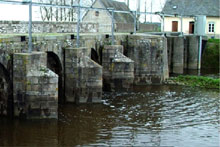
Col. «Skeet» Johnson 501st PIR «Barquette lock Operation»
German control of back flooding the lowlands behind Utah Beach and the Douve and Merderet River valleys was accomplished by opening and closing the lock gates at the appropriate times over a two year period. Colonel «Skeets» Johnson, commander of the 501st Regiment of the 101st Airborne Division, attacked from the north early D-day morning with 150 men. The Germans withdrew south several hundred feet to prepared positions. US Navy counter fire against two German 88s in Carentan silenced the Germans. On D-day +1 German paratroopers of the 1st Battalion, 6th Parachute Regiment attacked from the top right towards the T-junction. Although out-manned the Americans bluffed the Germans into surrendering. In error German artillery killed many of their comrades as the POWs were being marched into captivity. Today, the Liberté Expressway across these lowlands near Carentan passes very close to the lock.